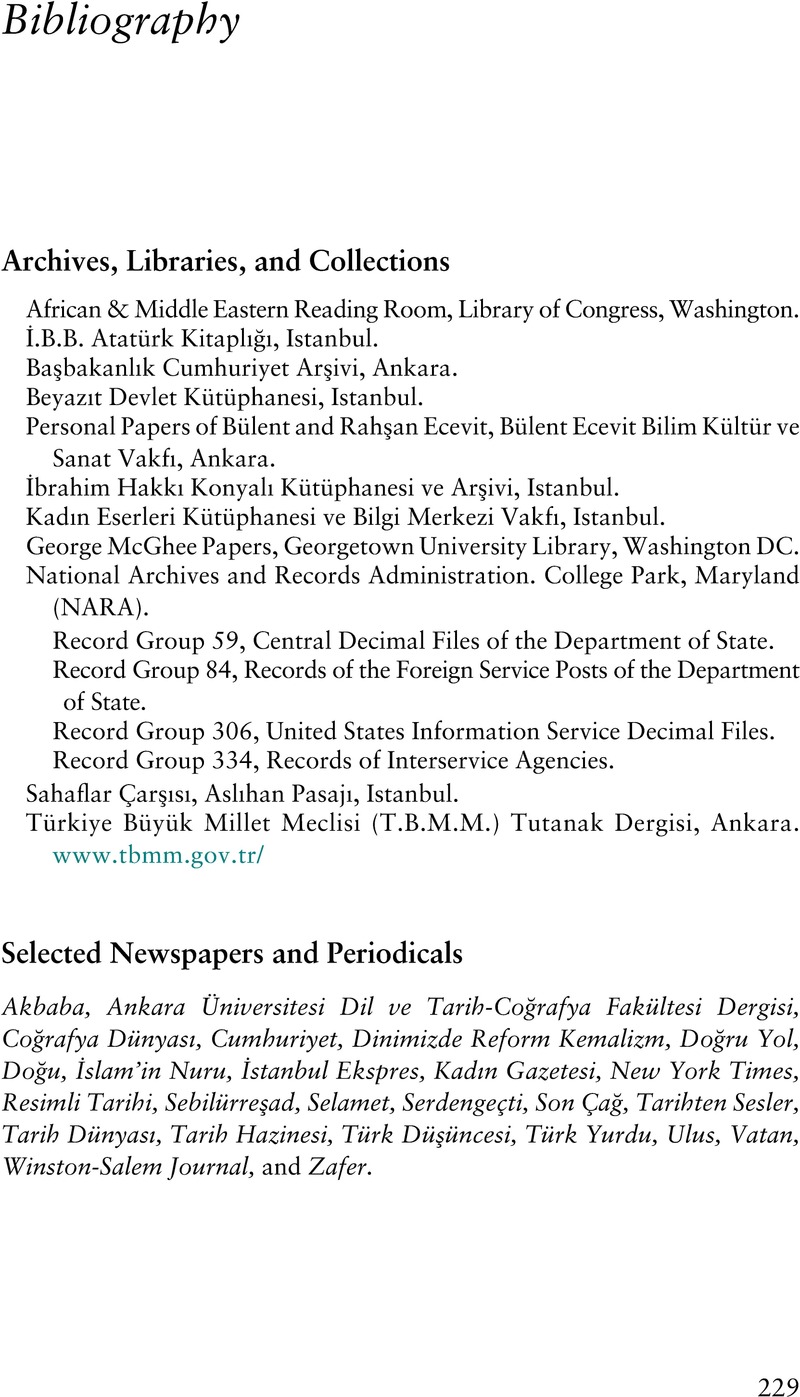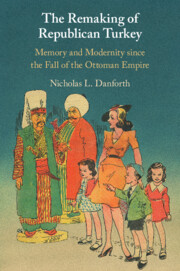Book contents
- The Remaking of Republican Turkey
- The Remaking of Republican Turkey
- Copyright page
- Dedication
- Contents
- Figures
- Acknowledgments
- Introduction
- 1 A Nation Votes
- 2 Turkey Attends the American Classroom
- 3 Asia in Europe, Europe in Asia
- 4 Multipurpose Empire
- 5 Making the Past Modern
- 6 Ottomans, Arabs, and Americans
- 7 The Path to Progress and to God
- Conclusion
- Bibliography
- Index
- References
Bibliography
Published online by Cambridge University Press: 12 June 2021
- The Remaking of Republican Turkey
- The Remaking of Republican Turkey
- Copyright page
- Dedication
- Contents
- Figures
- Acknowledgments
- Introduction
- 1 A Nation Votes
- 2 Turkey Attends the American Classroom
- 3 Asia in Europe, Europe in Asia
- 4 Multipurpose Empire
- 5 Making the Past Modern
- 6 Ottomans, Arabs, and Americans
- 7 The Path to Progress and to God
- Conclusion
- Bibliography
- Index
- References
Summary

- Type
- Chapter
- Information
- The Remaking of Republican TurkeyMemory and Modernity since the Fall of the Ottoman Empire, pp. 229 - 242Publisher: Cambridge University PressPrint publication year: 2021



